Last week sake extraordinaire Marie Cheong Thong gathered us at classy Sumosan Twiga to learn and sample some of the most unusual sakes.
I spoke about the amazing Marie Cheong Thong in my olive oil tasting article back in March. I called her an olive oil connoisseur, but how wrong I was. She is so much more than that.
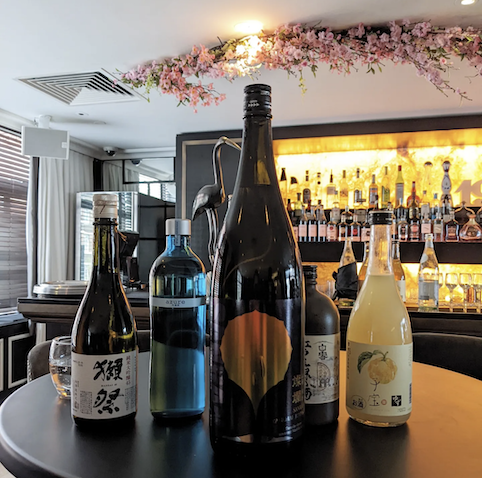
Last week we gathered on a top floor of a classy Sumosan Twiga to sample some of the finest and unusual sakes. The Masterclass was led by Marie with a special guest Bowie Tsang from The Japan Centre.
He is a sake sommelier who is mostly found in the White City Ichiba with its dedicated sake bar, where he guides customers through a vast selection of sakes on offer.
We started off with a classic Bloody Mary, the palate cleanser, as Marie dived straight into the sake production methods. Sake originated in China actually, although it was a different type of production and the Chinese referred to the drink as rice wine.
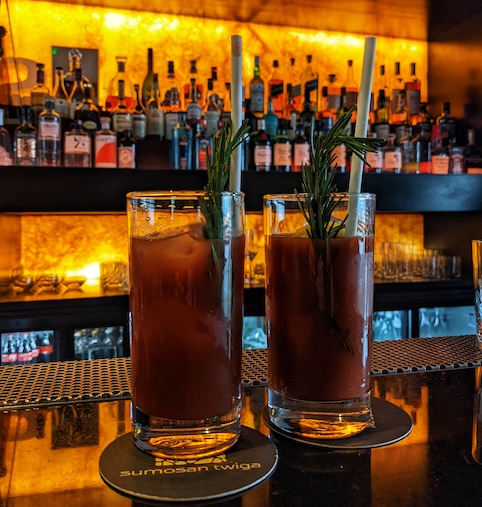
Sake is made from a special variety of rice (sakamai) and, as with any sake production including the current ones, fungus is involved in the fermentation process. An early variety of sake in Japan was called Kuchikamizake. Kuchi means mouth.
Kuchikamizake means a mouth-chewed sake, the rice was chewed and then fermented in barrels for two weeks. The enzymes in human saliva helped the rice to ferment and consequently produce alcohol. A rather unflattering production method if you ask me, and perhaps luckily we did not sample Kuchikamizake.
It took a while for true sake to be born. The production of sake we know today began in the 11th century and consisted of a three stage fermentation, stages that still needed to be followed now to create this drink. In each of the stages water plays a very important role, normally a very soft fresh water, often from a spring.
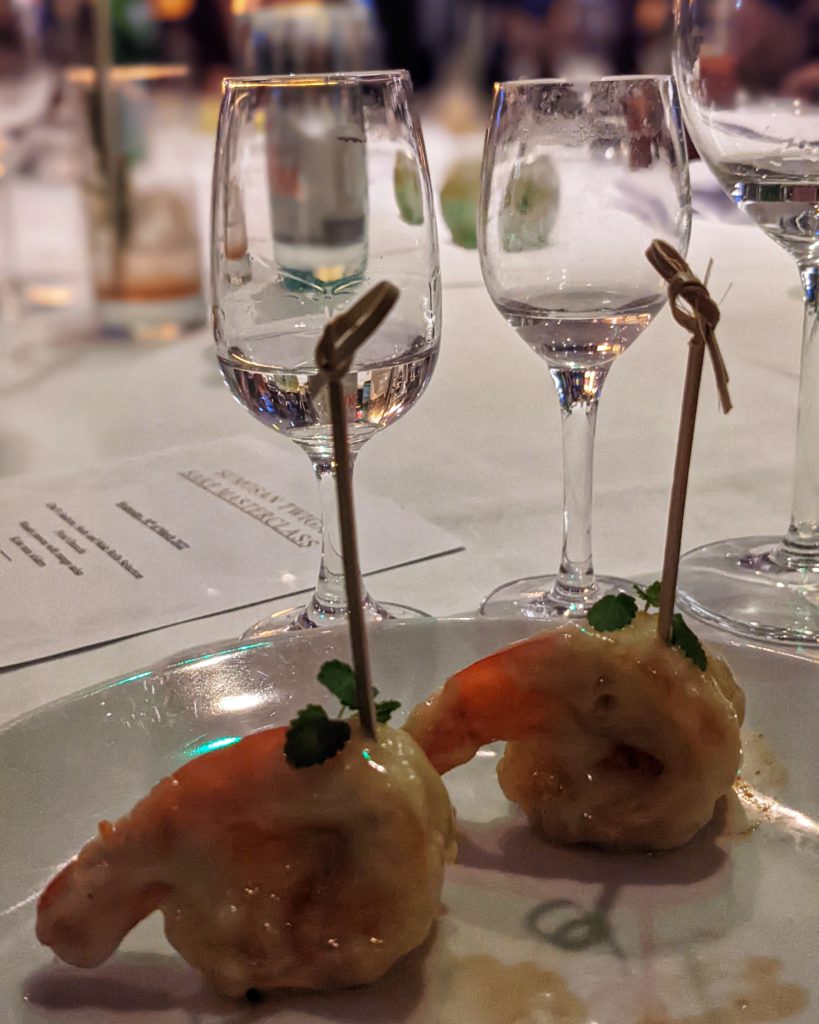
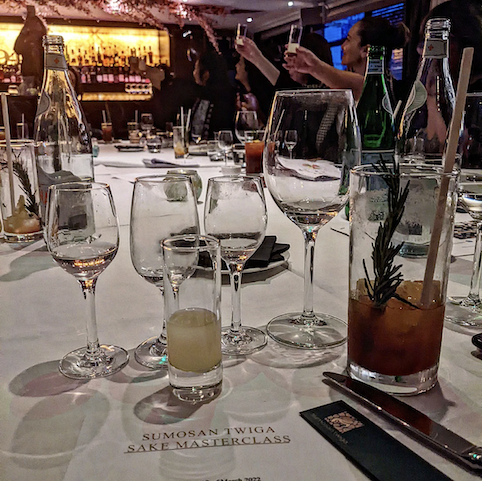
Firstly, the rice is polished to strip off the bran to reach the starchy middle, required for high quality sake. Then it is steamed and koji spores are added. The mash is then mixed with the yeast starter (shubo) and left to ferment, this is then followed by dilution with addition of alcohol or water, filtration and pasteurisation.
Once we were prepped on the sake making terminology, we were served our first sake – Dassai Junmai Daiginjo. Dassai is one of the most famous sakes that’s served at important international events and conferences. Jun means ‘pure’ (no alcohol added) and mai rice, while Daiginjo stands for a polishing of at least 50% or less.
Dassai Junmai Daiginjo is polished at 45 % polished and tasted very different to sakes I have tried before. It was fruity and a little banana. I thought my tasting palate was way off for suggesting notes of a bubblegum, but when I said it out loud Marie sided with me. Apparently that is the flavour for top of the top sakes.
Then a delicious looking and tasting chef’s sushi selection arrived and it was time for our second sake – Sanran 65Y Yamahai Junmai polished at 65%. We sampled it at room temperature and warmed up. That was the sake flavour I was used to, a little acidic with prominent umami notes. Warmer temperature made it smoother and less dry, even buttery.
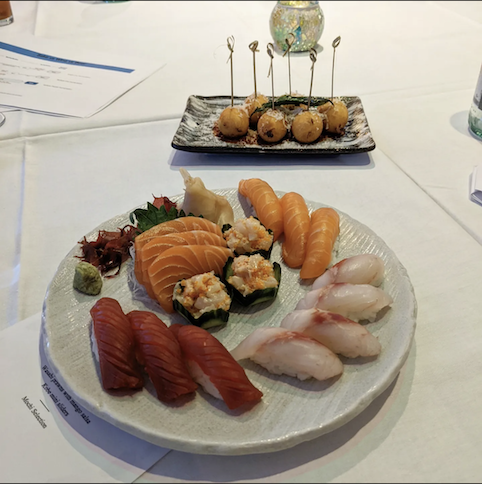
However, perhaps one of the most unusual samples was Azure Ginjo (55% polishing rate), which is made with underground hard desalinated seawater in the Shikoku region. Azure had dry, fresh notes with a flavour of the sea somehow, slightly salty.
Azure complimented beautifully with fried crispy gnocchi and juicy wasabi prawns, as per the bottle’s recommendation: to serve with seafood. This was then shortly followed by the classic Kodakara Yuzu Tengu Sake.
It is not a Japanese event without some form of yuzu flavours present. Citrus, lemon and grapefruit on the tongue, pleasantly cloudy and warm yellow on the eye, yuzu liquor paired amazingly with the classic strawberry ice cream mochis.
Our final drink was the fascinating Shirayuki Genroku Redux Junmai (88% polished rate) prepared following an ancient 1703 recipe. The sake is made at Konishi Shuzo, the oldest sake brewery owned by a single family.
Back then rice could not be polished to such a great extent, resulting in rich brown but clear colours. Shirayuki Genroku had mushroom, nut and even slight toffee notes with prominent brown rice miso. It was sweeter too, definitely an interesting sake to sample.
It would not be fair to end the article without a special mention to the venue – Sumosan Twiga. The dishes were delicious of course, but what impressed me more was the concept of the restaurant. It is an Italian and Japanese fusion.
The menu is split to Italian and Japanese dishes ranging from the classic gnocchi and burrata to the sashimi and miso, sounds unusual but it definitely works.
Just last month my friend and I ordered a sashimi boat and rolls at a typical Japanese restaurant. I left craving carbs and perhaps some wheat based dishes, Sumosan Twiga would have hit the spot.
